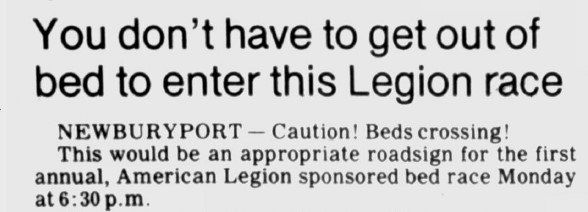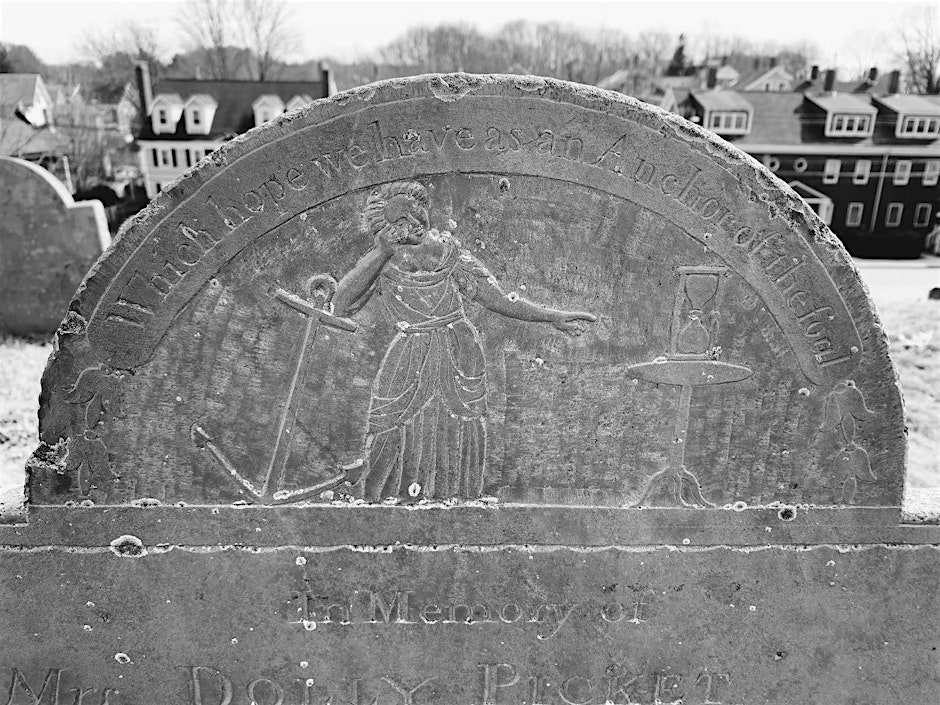Other Duties as Required... (Originally published August 2, 2024)
/by Bethany Groff Dorau, Executive Director
Images and video in this story are courtesy of Bob Watts, Shelley Swofford, Steve Crosby, and Alex Yablin. This one is from Bob.
When I began working at Historic New England nearly 25 years ago, I was presented with a job description that closed the "Primary Responsibilities" section with "other duties as required". It made me chuckle then as now, since this one line seems to sum up what museum work can involve - literally anything.
Over the course of my career, I have invoked this line when I found myself called to crawl in a manhole with a video camera on my head, fish a live muskrat out of a rain barrel, sleep on the ground with an ailing sheep, test a stuffed pheasant for arsenic, drive a fire truck...the list goes on and on. I can honestly say that no two days are alike. I would go so far as to say that on any given day I must have at least two outfits at the ready - one for looking like I am the director of a venerable museum, and one for crawling around in an attic. Yesterday I had a three-outfit day, and the third outfit involved flying down Federal Street with a model ship on my head.
Other duties as required.
It began with James Brugger, an esteemed board member and friend. He suggested that we should enter a Museum of Old Newbury bed in the Yankee Homecoming Bed Race, organized by the Lions Club. Because another part of museum work involves being chronically short of staff and funding, I gave my wholehearted consent, if it did not cost the museum any money and the work was done by volunteers.
Enter Steve Crosby, preservation carpenter extraordinaire, remembered by many as the man who staged the terrific Halloween tableaux on Marlboro Street for years. James and Steve and I got talking at a party, and we were off to the races, pun intended.
It began with an idea and a drawing...
The concept was fleshed out by Steve and James. Supplies were ordered, measurements and weights debated, race rules pondered, and slowly but surely, thanks to Steve's incredible plywood-bending skills, the bed took shape.
Now, just in case you are scratching your head at the whole idea of a "bed race", let's back up for a moment.
On June 27, 1984, the Newburyport Daily News announced the first running of the beds as part of Yankee Homecoming. The rules were very similar to those of today. The bed must be of a standard size, there could be a maximum of 5 runners, and someone must be in the bed.
In 1984, the bed races started at the corner of State and High Streets, raced down High Street, then down Federal Street, and terminated at Atwood Street. It was twice the current 1/4 mile length. Nobody was sure how it would go, including American Legion commander Alan "Buster" Driscoll. "I didn't think too much would come of it." Driscoll said. It was wildly popular in the end, with over 30 beds registered.
Bed races were not new in 1984, though the "ladies bed races" held in Newbury since the 1950's were very different. In these races, women were tucked into bed, and when an alarm sounded, they had to don full firemen's outfits, run across a field, and spray targets (and sometimes each other) with fire hoses. This was generally held as part of a benefit for a local fire department, as was the case here in this 4th of July event in Newbury in 1969.
We are not alone in our fondness for combining beds and racing. Rutgers University has been holding bed races since 1966, the same year that the Knaresborough Round Table in North Yorkshire, England, began holding bed races that covered a grueling 2.4 mile course. Since 1990, Kentucky Derby Bed Races have been held in an indoor track.
With the decline in American Legion membership in the area, the Newburyport Bed Race ended in 1995, but was revived in 2002 by the Lions Club. It has been a steady crowd favorite at Yankee Homecoming celebrations ever since.
Meanwhile, in the carriage barn of the Cushing House, Steve and James were working tirelessly on the Museum of Old Newbury racing bed. As the process neared completion, other volunteers jumped in. Shelley painted and added the clock faces with Sharon's help. I donated an old porch chair which was cut down, stabilized, and painted. My husband, James, recorded chiming clocks and lent his portable speaker and his tricorn hats. We had fans made out of the memorable face of our beloved Landlocked Lady, a figurehead who never went to sea.
And then there was the small matter of the runners. James secured the services of the Charles River Rats Run Club to speed us to victory. And then, one day before the big race, the bed was declared ready, and a hearty crew of interns, volunteers, and staff took her for a test run. Our archivist brought in a hat with a model ship screwed atop. My entire outfit changed to accommodate that stellar chapeau.
Race day dawned hot and humid. The interns and staff donned tricorn hats and grabbed fans to hand out. The runners assembled, and Steve and James dressed to the nines, though Sharon outdid us all. I hopped aboard and we walked down to our place at the head of Federal Street.
After a fun wait while we fraternized and sampled the beverages brought by the runners of several nearby beds, it was our turn.
We were fifth in line to race, and though the lads put in a tremendous effort, in the end, the wheels on the bed went wonky and we had to slow considerably. Still, the sirens blared and the crowds cheered and Old South rang her bells, and we hurtled down the street and it all went by in a flash.
After the race, the runners wheeled the bed back to the museum, trailed by the laughing interns and Shelley in their tricorn hats. James and Steve wandered off to their respective parties, and I walked slowly back up Federal Street in search of my family.
I will never forget all of us at the starting line singing La Marseillaise in honor of Annabelle's looming departure for graduate school in France, or how Shelley gave me her fan, Sharon her hat, my daughter Meg her dress. I will think of Steve in the carriage barn late at night and early in the morning, and James with his buckle sneakers, always thinking of new things to try.
I will remember each of you who came over for a hug and a high-five, the little boy who asked to touch my wings, the ringing of the steeple bells, laughing with Kristin as we waited for Senator Tarr, Bob behind the camera with his megawatt smile.
After the race, a photographer asked me to step into the street for a picture, and the smile on my face says it all. I am so proud of all of us. So much effort and thought went into this project, all in service of this wonderful museum.
Joy and friendship and love and wearing wings and a ship on my head are not in my job description, friends. Thank goodness for Other Duties as Required.





















